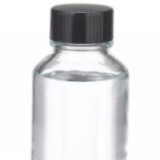|
|
|
Acetic Acid Glacial & Solution ---- Boric Acid ---- Erythorbic Acid ---- Formaldehyde Solution ---- Formic Acid ---- Fumaric Acid ---- Gallic Acid ---- Gluconic Acid ---- Glutaraldehyde ---- Glycerophosphoric Acid ---- HEDP ---- Hyaluronic Acid ---- Lactic Acid ---- Lactobionic Acid ---- Lauric Acid or Dodecanoic Acid ---- Maleic Acid ---- Malic Acid ---- Maltobionic Acid ---- Myristic Acid ---- Oleic Acid ---- Orotic Acid ---- Peracetic Acid ---- Propionic Acid ---- Selenious Acid |
|
HEDP Hydroxy Ethylidene Diphosphonic Acid SDS MSDS of Manufacturers & Exporters
Hydroxyethylidene Diphosphonic Acid (HEDP Phosphonate) 1. Product Identification Product Name & Other Names: Sal HEDP Phosphonate; HEDP (A) or HEDPA or ETIDRONIC ACID or 1-Hydroxy Ethylidene-1,1-Diphosphonic Acid or Hydroxyethylidene-1,1-diphosphonicacid(HEDP) or 1-HYDROXYETHYLIDENEDIPHOSPHONIC ACID or Hydroxyethylidene Diphosphonic acid (HEDP) or 1-hydroxy-1,1-Ethanediyl ester. 2. Hazards Identification GHS, Globally Harmonized System Classification in accordance with 29 CFR 1910 Corrosive to Metals Category 1, H290 Labeling according to GHS & Regulation (EC) No 1272/2008
Signal Words: Danger Hazard statements: Precautionary statements: 3. Composition/Information on Ingredients Product Name & Other Names: Sal HEDP Phosphonate; HEDP (A) or HEDPA or ETIDRONIC ACID or 1-Hydroxy Ethylidene-1,1-Diphosphonic Acid or Hydroxyethylidene-1,1-diphosphonicacid(HEDP) or 1-HYDROXYETHYLIDENEDIPHOSPHONIC ACID or Hydroxyethylidene Diphosphonic acid (HEDP) or 1-hydroxy-1,1-Ethanediyl ester. 4. First Aid Measures Always seek medical attention after first aid measures are provided. Inhalation: Remove to fresh air. If not breathing, give artificial respiration. If breathing is difficult, give oxygen. Get medical attention immediately. 5. Fire Fighting Measures Fire: It is a slight fire hazard. Dust air mixture may ignite or explode. 6. Accidental Release Measures Personal precautions, protective equipment and emergency procedures: Avoid breathing dust/fumes/gas/mist/vapors/spray. Ensure adequate ventilation. Use individual protective equipment (waterproof boots, suitable protective clothing, safety glasses, etc.). Restrict unprotected personnel from the area. Prevent any contact with hot surfaces. Do not approach facing the wind. 7. Handling and Storage Precautions for safe handling: Apply according to good manufacturing and industrial hygiene practices. Ensure proper ventilation. Wash thoroughly after handling. Do not drink, eat or smoke while handling. Avoid contact with skin, eyes and clothing. Minimize dust generation. Avoid breathing dust/fumes/gas/mist/vapors/spray. Avoid contact with eyes, skin, and clothing. Keep container tightly closed. Avoid ingestion and inhalation. Use individual protective equipment (waterproof boots, suitable protective clothing, safety glasses, etc.). 8. Exposure Controls/Personal Protection Exposure Limits: No occupational exposure limits established. 9. Physical and Chemical Properties Appearance: Clear, colorless to pale straw liquid. 10. Stability and Reactivity Reactivity: Stable at normal temperature and pressure. 11. Toxicological Information 1800 mg/kg oral-mouse LD50 12. Ecological Information Environmental Toxicity: Invertebrates: 48 h, EC50 Water flea (Daphnia magna) 527 mg/l Fish: 96 h, LC50 Rainbow trout (Oncorhynchus mykiss) 368 mg/l 96 h, LC50 Bluegill sunfish (Lepomis macrochirus) 868 mg/l 13. Disposal Considerations Whatever cannot be saved for recovery or recycling should be managed in an appropriate and approved waste disposal facility. 14. Transport Information DOT USA, TDG Canada & ADR/RID Europe 15. Regulatory Information USA: Section 16 - Additional Information DISCLAIMER: The information and recommendations set forth herein (hereinafter "Information") are presented in good faith and believed correct as of the date hereof. It is compiled from various sources and it is not necessarily all inclusive nor fully adequate in every circumstance. In addition, these suggestions should not be confused with nor followed in violation of applicable laws, regulations, rules or insurance requirements applicable. This MSDS sheet is intended only as a guide to the appropriate precautionary handling of the material by a properly trained person using this product. Individuals receiving the information must exercise their independent judgment in determining its appropriateness for a particular purpose. |
Crystal Clear Products and the group companies are manufacturing chemicals since several decades. We have automatic vacuum operated titanium evaporators and SS316 equipments to produce top grade of chemical products. We have toll manufacturers and representatives in China, UAE, Europe, Canada & USA and agents & customers in all countries like USA, Canada, Europe, UAE, South Africa, Tanzania, Kenya, Egypt, Nigeria, Uganda, Turkey, Mexico, Brazil, Chile, Argentina, Bangkok Thailand, Kaula Lumpur Malaysia, Dubai UAE etc. & sales representative in Chicago, Houston New York & Los Angeles, USA. Associated units are FDA-GMP certified, Halal and/or Kosher certified, REACH registered, ISO-9001, ISO-22000 HACCP certified, Crisil Rated.
Contact HEDP Hydroxy Ethylidene Diphosphonic Acid IP BP Ph Eur EP JP USP NF ACS Analytical Reagent FCC Food Grade manufacturers exporters at:

Crystal Clear Products
Plot No-C1-1031-9, GIDC Estate, Panoli, Ankleshwar, Gujarat - 393002. India
Telephone Mobile: 91-7506449333; e-mail: info@crystalclearproducts.org
e-mail: info@crystalclearproducts.org
Manufacturers, Suppliers of IP BP Ph Eur EP JP USP NF FCC Food, ACS Reagent GMP Grades of Chemicals like HEDP Hydroxy Ethylidene Diphosphonic Acid





